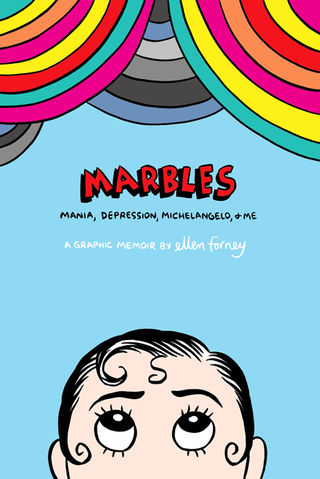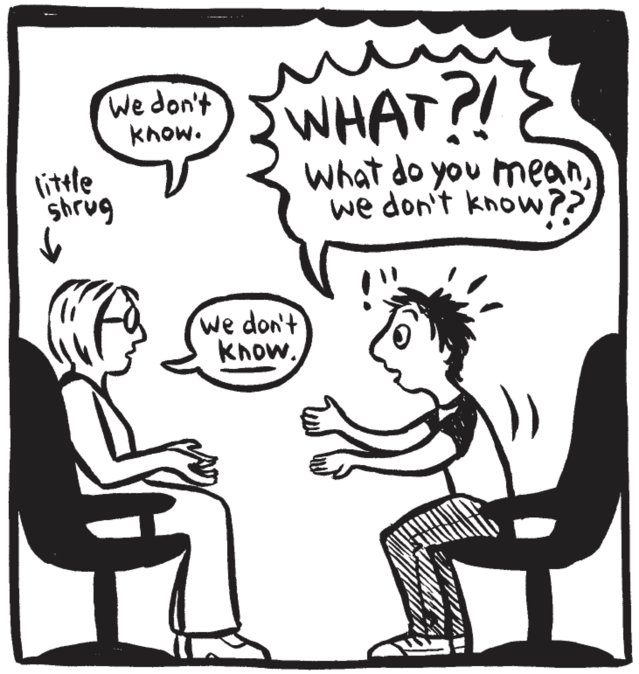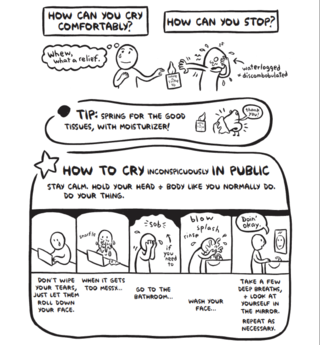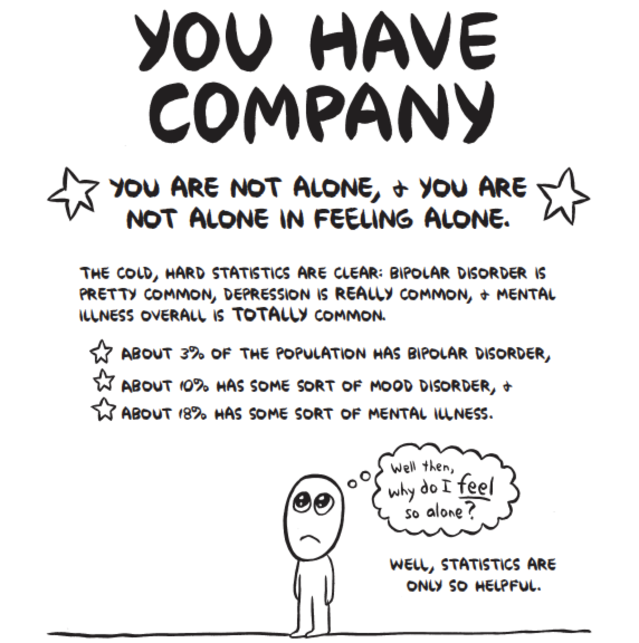Health
Comics and Medicine: Interview with Ellen Forney, Part 2
Why are healthcare professionals turning to a graphic novel for guidance?
Posted July 23, 2018
In Part 2 of my interview with Ellen Forney, we discuss the cartoonist's influence on healthcare, the emotional support that comes with community, and the first SMEDMERTS tattoo!

Your book Marbles was recently chosen as University of Washington’s Health Sciences “Common Book" for this coming year. It’s gratifying to know that people in the health professions and sciences are interested in dialogue with a writer and cartoonist like you. How does it feel to receive such an honor?
It feels SO AWESOME to know that thousands of future doctors and caregivers will be exposed to my work and to comics in general - it’s huge! Marbles has been included in Humanities courses in med schools, but this scale..!
Personal stories need to be part of medical education, to have real human context to balance the hard clinical aspects of health care. That’s especially true with mental illness, because internal experience is so difficult to describe. Comics have an advantage over other kinds of narrative medicine, too, in that the drawings can express an abstract, intuitive sense of mood and emotions, as well as the explicit meaning of the words.

I graduated from Wesleyan University with a degree in Psychology, and for a long time I thought I was flouting my degree by becoming a professional cartoonist. Looping back to combine the two has been intensely satisfying. I consider Marbles and Rock Steady as the senior thesis I never did.
I’ve been involved in the Graphic Medicine field for several years now - comics about health and health care. The National Library of Medicine even hired me to curate a traveling exhibit on graphic medicine - who’d have thought?

In some ways reading both Marbles and Rock Steady feels like hanging out with a really great friend, one who’s there for support, with a spritely touch. In Rock Steady, that means offering a lot of advice, on topics ranging from choosing a type of therapy to methods for breathing, getting enough sleep, meditating, music, drawing, and “crying and not crying.” You’re never bossy, even when you assert strong opinions. You're encouraging and concrete—for example, in panels on “how to cry inconspicuously in public.” I’m really curious to hear your ideas about how the images you draw create a unique dynamic between you and your audience.
Comics can create a real sense of intimacy, especially when they’re hand-drawn and hand-lettered. I’ve been told that my work is like “getting a letter from a friend.” That really is the dynamic I aim for.
I’m a friendly person, I like to connect with people. I find that making someone laugh is one of the

best ways to connect – it’s really disarming. If two people can laugh at the same thing, there’s a connection there, a sense of perspective. Drawing can be a shortcut to making people laugh - I know how to draw a goofy face. I made SMEDMERTS a funny little monster. (See Part 1 to decode the acronym.)
Speaking of which: someone has already gotten a SMEDMERTS tattoo. She wrote to me that she read Rock Steady when she was hospitalized, and asked if it’d be okay with me if she got a SMEDMERTS tattoo. Here is our exchange:
Ellen Forney: I have thought about [your request to get a SMEDMERTS tattoo] and I say great! and go for it! UNDER THE CONDITION that you have SMEDMERTS memorized and swear to give a reasonable explanation to whoever might ask. How does that sound? Plus send me a good picture! E.
Reader: Yay!!! Thank you so very much!! That sounds great! I do already have it memorized and will give a great response. Rock Steady was a huge help when I was in the hospital and still is. Thank you again, you are the absolute best.
In Part 1 of our interview, you mentioned that the DSM does a pretty good job of defining the basics of shared bipolar experience. Your work makes it clear that you’re grateful for the best of psychiatry, neurology, and psychotherapy. You also make it clear that community, friendship, and family are also incredibly important. Will you say a little about that?
Emotional support really comes from family, friends and community, the people we can reach to when we’re feeling vulnerable. The flesh around the bones of clinical treatment, perhaps. Logistical support, too – someone to help make phone calls to find a therapist with a sliding scale, or someone to make sure we eat real meals, or to be an encouraging, comforting “wing man” to go out when it’s tempting to self-isolate.
It’s important to recognize that it’s really challenging to handle a mood disorder, and we’ll need to lean on our people sometimes, and appreciate their reaching out to us. Ideally, real people, in person, but internet friends can be valuable, too.
I’ll add that finding that support is tougher for some people than others. I am surrounded by people who make sure I know they love me, and would support me if I’m laid low. I’ve gotten endless love from my mom, but then also more logistical support when my health insurance didn’t cover mental health, and I was hardly working because I was really struggling with my depression. She paid for a lot of my expenses, including my psychiatrist.
Not everyone has those kinds of resources. Some families and communities don’t really understand the issues around mental illness, or still retain a lot of stigma around it, and the person struggling has that much more to deal with, sometimes even from their immediate family. It’s all the more reason to find support somewhere, like a support group or chosen family, or making an effort when you’re not feeling low to find people who you might be able to reach out to when you’re low.
You’re big on reminding readers they’re not alone. You also offer some really concrete advice for “coming out” as bipolar. Why is coming out important? How can people do it with dignity—given the shame and stigma that’s so common when it comes to mental Illness?
I will refer you to Rock Steady for this part. : )





